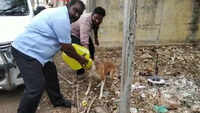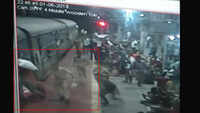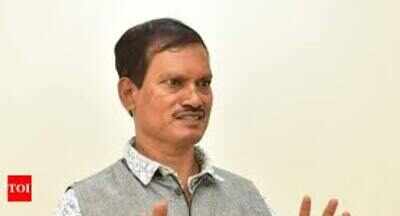
COIMBATORE: From this year, Class XII biology group students, following the Tamil Nadu state board syllabus, will study a small sub chapter on padman Arunachalam Muruganantham and his journey towards innovating a machine that can provide affordable sanitary napkins for women to use during menstruation.
While Muruganantham’s story is a regular feature at most social entrepreneurship and innovation modules even at IIT, this is the first time that school students have got a chapter on him.
It was in February this year that the New Delhi government contacted him wanting to include his story in their state board textbooks. However, in mid-March, Muruganantham got a phone call from one of his schoolteachers, Vivekanandhan, who taught Class VII in the Papanaickenpudur Government Middle School. “He told me he had just downloaded the latest Class XII state board bio-zoology textbooks and saw a chapter on me in it. I was confused because it was the Delhi government who called me. I anyway did not want to reveal it till the official textbooks were printed and distributed,” he said.
On Monday, when schools reopened across the state and the bio-zoology text books were distributed to students, Muruganantham realised that the information was true.
“The thought that our Tamil Nadu students and my own children who are in school will one day study about me fills me with a warmth and sense of accomplishment that I can’t explain,” he said.
Muruganantham says the chapter has an outdated information since it stated he has established 250 machines while the actual number is more than 5,000 now.
Muruganantham says this chapter on him breaks two glass ceilings—one aspirational and one social. “When I was in school, we studied only about Thomas Alva Edison, Albert Einstein and Marconi as inventors. Students subconsciously believe that only old people, with long beards and European names can be inventors and innovators. Now they know that’s not true. I was much younger, came from a poor background, did not have a proper education and innovated something to bring a social change,” he says.
“The social change is making students study about mensuration, a woman’s problem, and telling them that there are boys and men who work on the issue,” he adds.
While Muruganantham’s story is a regular feature at most social entrepreneurship and innovation modules even at IIT, this is the first time that school students have got a chapter on him.
It was in February this year that the New Delhi government contacted him wanting to include his story in their state board textbooks. However, in mid-March, Muruganantham got a phone call from one of his schoolteachers, Vivekanandhan, who taught Class VII in the Papanaickenpudur Government Middle School. “He told me he had just downloaded the latest Class XII state board bio-zoology textbooks and saw a chapter on me in it. I was confused because it was the Delhi government who called me. I anyway did not want to reveal it till the official textbooks were printed and distributed,” he said.
On Monday, when schools reopened across the state and the bio-zoology text books were distributed to students, Muruganantham realised that the information was true.
“The thought that our Tamil Nadu students and my own children who are in school will one day study about me fills me with a warmth and sense of accomplishment that I can’t explain,” he said.
Muruganantham says the chapter has an outdated information since it stated he has established 250 machines while the actual number is more than 5,000 now.
Muruganantham says this chapter on him breaks two glass ceilings—one aspirational and one social. “When I was in school, we studied only about Thomas Alva Edison, Albert Einstein and Marconi as inventors. Students subconsciously believe that only old people, with long beards and European names can be inventors and innovators. Now they know that’s not true. I was much younger, came from a poor background, did not have a proper education and innovated something to bring a social change,” he says.
“The social change is making students study about mensuration, a woman’s problem, and telling them that there are boys and men who work on the issue,” he adds.
World Cup 2019
Trending Topics
LATEST VIDEOS
City
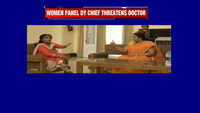 On cam: UP Women Commission deputy chief threatens a senior lady doctor
On cam: UP Women Commission deputy chief threatens a senior lady doctor  Nipah virus case confirmed by Kerala govt, 86 people under observation
Nipah virus case confirmed by Kerala govt, 86 people under observation  Delhi: 26-year-old man bludgeoned to death with cement slab after objecting to accused urinating near his home
Delhi: 26-year-old man bludgeoned to death with cement slab after objecting to accused urinating near his home 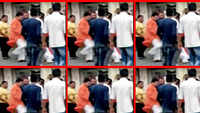 Ahmedabad: MLA kicks woman after she falls on the ground, video goes viral
Ahmedabad: MLA kicks woman after she falls on the ground, video goes viral
More from TOI
Navbharat Times
Featured Today in Travel
Quick Links
Lok Sabha Election Schedule 2019Lok Sabha Election NewsDelhi Capitals teamMI team 2019Rajasthan Royals 2019RCB team 2019Maharashtra Lok Sabha ConstituenciesBJP Candidate ListBJP List 2019 TamilnaduShiv Sena List 2019AP BJP List 2019Mamata BanerjeeBJP List 2019 MaharashtraPriyanka GandhiBJP List 2019 KarnatakaAMMK Candidate List 2019BJP List 2019 WBLok Sabha Elections in Tamil NaduBSP List 2019 UPNews in TamilLok Sabha Poll 2019Satta Matka 2018PM ModiMahagathbandhanNagpur BJP Candidate ListChandrababu NaiduTamil Nadu ElectionsUrmila MatondkarNews in TeluguMadras High CourtTejashwi YadavArvind KejriwalTejasvi SuryaPawan KalyanArvind KejriwalYogi AdityanathJaya PradaSatta King 2019Srinagar encounter
Get the app
